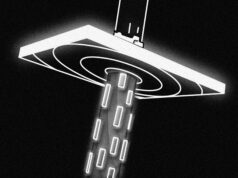
Twelve-month outcomes from the Pounce venous thrombectomy system (Vetex Medical) first-in-human study evaluating its use in the treatment of acute iliofemoral deep vein thrombosis (DVT) recently published in the Journal of Vascular Surgery: Venous and Lymphatic Disorders (JVS-VL) demonstrated an overall post-thrombotic syndrome (PTS) rate of 18.2%.
The nonrandomized, prospective, multicenter study, sponsored by Vetex Medical, included 19 patients with acute DVT who received treatment with the Pounce system, which combines basket-rotational thrombectomy and is designed to minimise the need for thrombolytics or repeat procedures. It was led by first author Stephen Black (London, UK) and colleagues, and followed patients out to 12 months post-procedure.
The primary performance endpoint of the study was procedural success, with secondary endpoints including patient quality-of-life measurements using the Venous Insufficiency Epidemiological and Economic Study-Quality of Life questionnaire (VEINES QOL/Sym), the venous disease severity assessment using the Villalta scale and the Venous Clinical Severity Score (VCCS), and calf measurements taken at baseline, 24 hours and one-month post-procedure.
The study resulted in complete (seven of 19 patients) or near-complete (12 of 19 patients) thrombus removal. No major bleeding or device-related adverse events were recorded. Only three were given thrombolytics.
PTS (Villalta Scale >4) was found in 17 of 19 patients at baseline. That number reduced to 4 of 13 patients available for follow-up six months out, and two of 11 available after 12 months. The median VCSS decreased to 4 after one month from a baseline of 8.5. That is similar to the changes at six months (2) and 12 months (2). “None of the 11 patients available for Villalta assessment at 12 months developed moderate or severe PTS (Villalta score >9),” the authors note. “Of the two patients who had PTS at 12 months, one had been stented and one had not.”
Median VEINES QOL/Sym scores improved from baseline (57) to one month (96) post-procedure, and remained high at both six-month and 12-month follow-up. Median calf circumference decreased from 39cm at baseline to 36cm 24 hours after the procedure and was 34.5cm at one month.
The authors concluded that the study, while small, indicated the Pounce system is ready for use, with a need for larger studies in the future to confirm the results.









